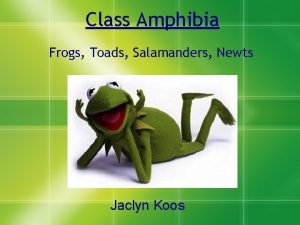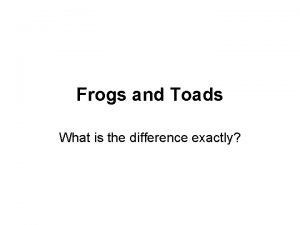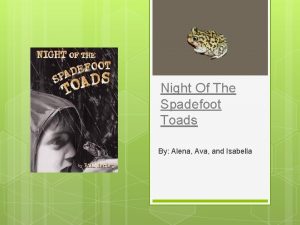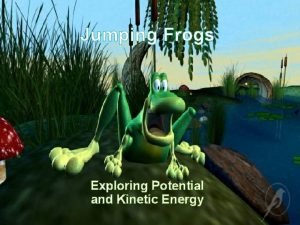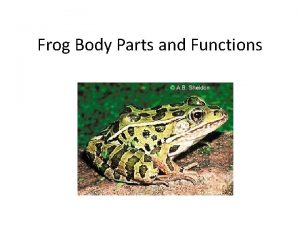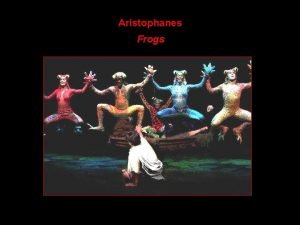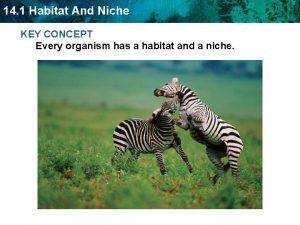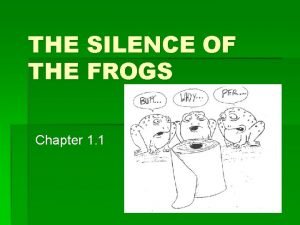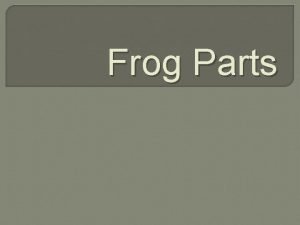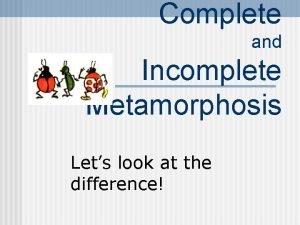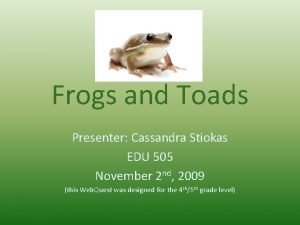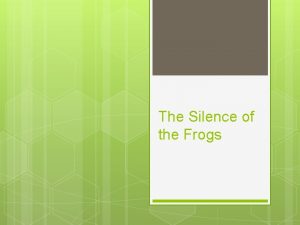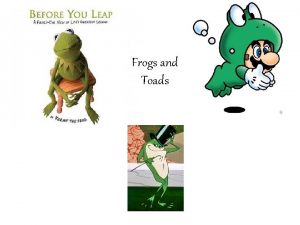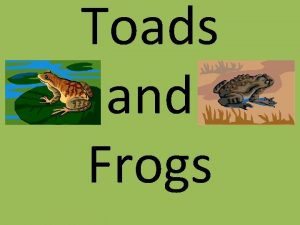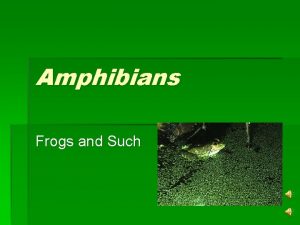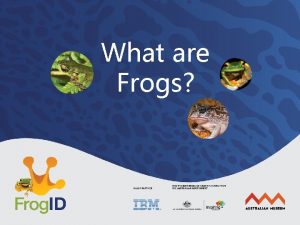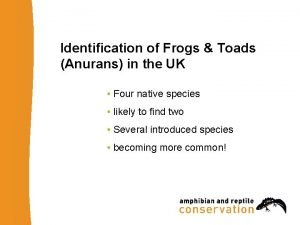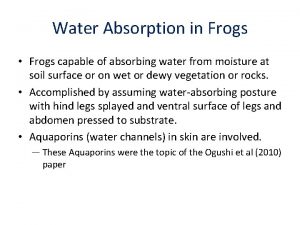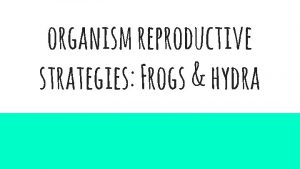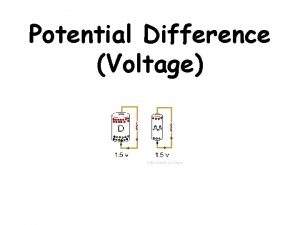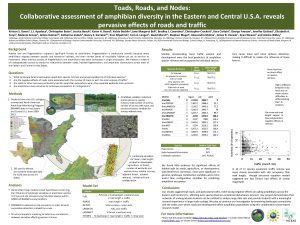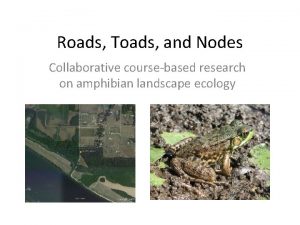Frogs and Toads What is the difference exactly
















- Slides: 16

Frogs and Toads What is the difference exactly?

Frogs and toads belong to the zoological class called Amphibians are cold-blooded animals with a backbone (vertebrates). They differ from reptiles in that they lack scales and generally return to water to breed.

What is a frog? • Generally speaking, when we think of frogs, we generally picture what are called “true frogs". These are members of the family Ranidae, containing more than 400 species. • Frogs have the following characteristics: – – two bulging eyes strong, long, webbed feet smooth or slimy skin lay their eggs in clusters

Where are frogs found? • Frogs can be found on every continent except Antarctica.

What exactly is a toad? • The term “toad” tends to refer to “true toads" who are members of the family Bufonidae, containing more than 300 species. • Toads are characterized by: – stubby bodies with short back legs – warty and dry skin – poison glands behind the eyes – laying eggs in long chains

Where are toads found? • True toads can be found worldwide except in Australasia, polar regions, Madagascar and Polynesia • Bufo marinus has been artificially introduced into Australia and some South Pacific islands

Some frogs are like toads … • Sometimes features appear mixed or less obvious • Certain species even fall into both categories. • It’s not uncommon, for example, to find a warty skinned frog that isn't a toad, or even a slimy toad! • Even the more invisible stuff like cartilage structure has been found to sometimes fit both categories!

Life cycle The same life cycle for frogs and toads: • Egg • Tadpole with legs • Froglet/young toad • Frog/toad

Tadpole • Shortly after hatching, the tadpole still feeds on the yolk, which is in its stomach. The tadpole has poorly developed gills, a mouth and a tail. It will usually stick itself to floating weeds in the water using little sticky organs. • 7 to 10 days after the tadpole has hatched, it will begin to swim around and feed on algae. • After about 4 weeks, skin starts to grow over the gills until they eventually disappear. The tadpoles develop tiny teeth, which help them grate food, turning it into soupy oxygenated particles. They have long coiled guts that help them digest as many nutrients from their diets as possible. • By the fourth week, tadpoles can actually be fairly social creatures. Some even interact and school like fish!

Tadpole

Tadpole with legs • After about 6 to 9 weeks, tiny legs start to sprout. The head becomes more distinct and the body elongates. • The arms begin to bulge, where they will eventually pop out, elbow first. • After about 9 weeks, the tadpole looks more like a miniature frog with a really long tail. It is now well on it's way to being almost full grown!

Egg • Frogs and toads tend to lay many eggs because there are many hazards between fertilization and fully grown frogs! Those eggs that die tend to turn white or opaque. The lucky ones that actually manage to hatch still start out on a journey of many perils. • Life starts right as the central yolk splits in two. It then divides into four, then eight, until an embryo is formed. Soon, the embryo starts to look more and more like a tadpole, getting longer and moving about in it's egg. • Usually, about 6 -21 days after being fertilized, the egg will hatch. Most eggs are found in calm or static waters, to prevent getting too rumbled about in infancy!

Egg

Baby Frog • By between 12 to 16 weeks, depending on water and food supply, the frog has completed the full growth cycle.

Froglet • By 12 weeks, the tadpole has only a teeny tail stub and looks like a miniature version of the adult frog. Soon, it will leave the water, only to return again to lay more eggs and start the process all over again!

And then it starts again… Now these frogs and toads will start the whole process again. . . finding mates and creating more frogs. And toads.
 Newts frogs and toads
Newts frogs and toads Shuki bruck
Shuki bruck Night of the spadefoot toads summary
Night of the spadefoot toads summary How to make paper frog
How to make paper frog Frog private parts
Frog private parts Frog body parts and functions
Frog body parts and functions Three unclean spirits like frogs
Three unclean spirits like frogs Duodenum frog
Duodenum frog Aristophanes the frogs
Aristophanes the frogs Deciduous forest animals and plants
Deciduous forest animals and plants Whats the difference between habitat and niche
Whats the difference between habitat and niche Tadpole food chain
Tadpole food chain Vomerine teeth on a frog
Vomerine teeth on a frog Is a frog complete or incomplete metamorphosis
Is a frog complete or incomplete metamorphosis Do frogs have hair
Do frogs have hair Stiokam
Stiokam Silence of the frogs
Silence of the frogs
